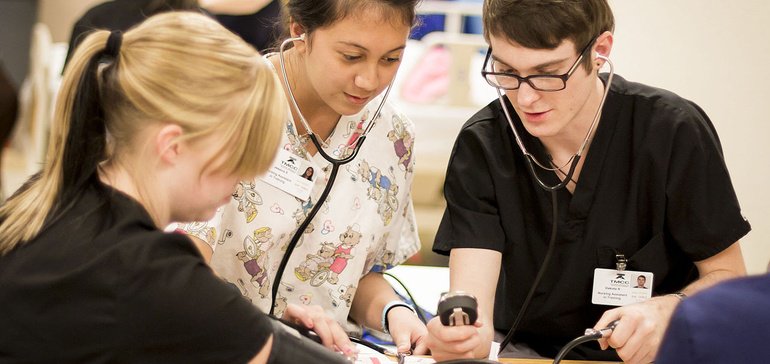Last Updated on September 19, 2017
Summer is heating up, and with it brings sizzling education news. This week, we explore how recent education trends in the States is putting the spotlight on apprenticeships to drive better preparation for students entering the workforce of the future. Because nothing beats real world experiences and mentorship when it comes to preparing students for their next steps.
Read on for a closer look at the new push for the apprenticeship model, as well as highlights from this week in education innovation.
1. International models highlight flaws in American workforce pipeline.
International models for apprenticeship programs showcase downsides in the American education model, as well as methods by which all countries can improve: “Higher education leaders working together with K12 educators to make sure the right students are going to college and are not only able to afford to stay, but be prepared to excel in skills that will help them in the long-run.” (Education Dive)
2. Classroom design mimics the workplace to drive edtech innovation and productivity.
“With classroom design in K-12 and higher ed increasingly prioritizing collaborative space and opportunities to integrate blended learning tools and approaches, it is notable how classroom designs are more closely approximating today’s workplaces rather than conventional classroom settings.” (Education Dive)
3. President Trump’s support for apprenticeships puts them back into the spotlight.
With growing state support, K-12 and higher ed have a role to play in the workforce development model. “While educators continue to focus on building the skills that help students get to higher education, employers say that those entering the workforce are still not prepared, particularly for jobs that desperately need to be filled.” (Education Dive)
4. How do you evaluate the success of an edtech program?
For schools investing in edtech, the question remains: Are student performance and learning improving?” Jeff Mao, who led the nation’s first statewide 1-to-1 learning program, offers advice on edtech evaluation: “Be targeted and intentional about how you use the technology… measure success one skill at a time and one student at a time.” (The Journal)
6. Internet education next darling of startups in China.
Internet education will be the next big thing when it comes to attracting startups, said experts at the China Internet Conference in Beijing this year. The key prediction? “The internet education sector, excluding vocational education, will see 40 to 50 listed companies with a total capitalization of about one trillion yuan.” (China Daily)
Empower Students to Gain Real World Experience
Your school may not have an apprenticeship program, but there is more than one way to enable students to gain “real world” perspective. Whether it is bringing in a guest lecturer (say, a NASA scientist) to share the real world applications of your physics lesson, or one-on-one career and academic guidance with a mentor who has been in the same shoes, mentorship is key to showing students that there is not “one right way” to pursue your career in the real world. With 100mentors, students can connect to a world of mentors to show them all of the options available to them so that they can select the path that is right for them.
Schools around the world are using 100mentors to provide their students on-demand access to 2000+ mentors from top universities and organizations from across the globe. Are you ready to empower your students to more consciously make their once-in-a-lifetime decisions?



